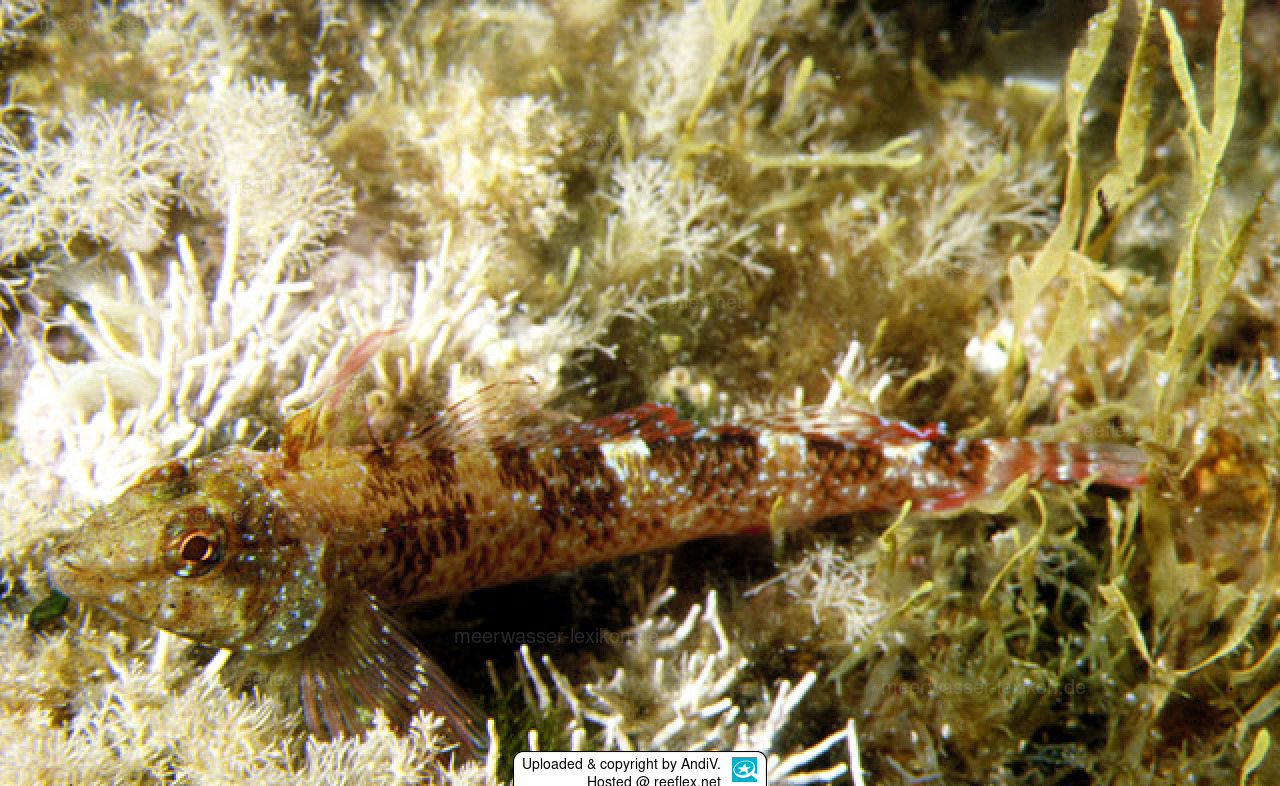Info
Carreras-Carbonell, Pascual & Macpherson, 2007
Inhabits similar habitats to Tripterygion tripteronotus, shallow rocky shores to 6 m, preferably between 0 and 3 m; in light-exposed and shady biotopes dominated by algal communities (e.g. Corallina elongata, Cladophora spp., Litophyllum spp., Enteromorpha spp.).
Nests are usually situated in sciaphyl habitats dominated by steep rocky zones, without arborescent algae.
Text source: FishBase
Jumping guard
A jumping guard prevents (nocturnal) fish from jumping out.
Wrasses, blennies, hawkfishs and gobies jump out of an unprotected tank in fright if their night rest is disturbed, unfortunately these jumpers are found dried up in the morning on carpets, glass edges or later behind the tank.
https://www.korallenriff.de/en/article/1925_5_Jump_Protection_Solutions_for_Fish_in_the_Aquarium__5_Net_Covers.html
A small night light also helps, as it provides the fish with a means of orientation in the dark!
Inhabits similar habitats to Tripterygion tripteronotus, shallow rocky shores to 6 m, preferably between 0 and 3 m; in light-exposed and shady biotopes dominated by algal communities (e.g. Corallina elongata, Cladophora spp., Litophyllum spp., Enteromorpha spp.).
Nests are usually situated in sciaphyl habitats dominated by steep rocky zones, without arborescent algae.
Text source: FishBase
Jumping guard
A jumping guard prevents (nocturnal) fish from jumping out.
Wrasses, blennies, hawkfishs and gobies jump out of an unprotected tank in fright if their night rest is disturbed, unfortunately these jumpers are found dried up in the morning on carpets, glass edges or later behind the tank.
https://www.korallenriff.de/en/article/1925_5_Jump_Protection_Solutions_for_Fish_in_the_Aquarium__5_Net_Covers.html
A small night light also helps, as it provides the fish with a means of orientation in the dark!







 AndiV
AndiV






